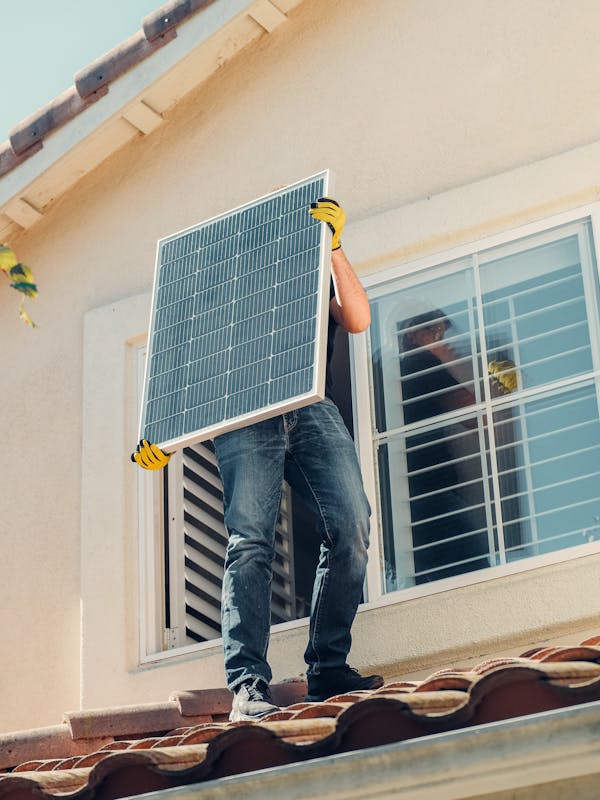Harnessing expert solar energy solutions lets businesses cut energy costs, reduce carbon footprints, and secure long-term savings. Tailored commercial solar systems, supported by flexible financing and strong industry partnerships, deliver reliable power with minimal upkeep. By choosing the right provider and technology, companies can turn sustainability goals into profitable realities while protecting themselves from volatile energy markets.
Essential Information for Businesses Considering Solar Energy Solutions
With a growing emphasis on sustainability and return on investment, Commercial Solar Energy Solutions empower businesses to reduce operational costs and carbon footprint. This page explains it in detail: Commercial Solar Energy Solutions. Modern commercial solar systems are engineered for longevity—lasting between 25 and 30 years—requiring little more than routine inspection and occasional cleaning. Businesses can expect significant savings on energy bills, especially when aligning system size with their unique energy consumption needs.
In parallel : What Are the Keys to Success in the UK Business Landscape?
Multiple installation types are available to suit different commercial environments. Options include efficient rooftop solar panels for warehouses, ground-mounted systems for facilities with ample outdoor space, and bespoke designs to address complex site requirements. Flexible ownership models, such as direct purchase, Power Purchase Agreements (PPA), and tailored asset finance solutions, accommodate a diverse range of financial strategies.
Understanding commercial solar pricing factors is essential. Upfront costs depend on system size, installation complexity, and selected technology. However, typical investments demonstrate a return within five to eight years, enhanced by national incentives and grants. The combination of reduced grid dependency, predictable operating expenses, and alignment with net zero strategies ensures commercial solar installations remain a practical, future-oriented investment.
Have you seen this : How Have Technological Advancements Affected Traditional Business Models in the UK?
Leading Technologies and Service Providers in Commercial Solar
Overview of Advanced Commercial PV Technologies and Efficiency Standards
Commercial solar power systems increasingly rely on high-efficiency photovoltaic (PV) panels—built to maximise power output from available roof or ground space. Modern commercial panels often exceed 400W per unit and use technologies such as monocrystalline silicon, bifacial designs, and half-cut cell construction, which reduce shading loss and boost energy yields. Longevity is a core strength, with most installations achieving a reliable lifespan of 25 to 30 years and minimal maintenance requirements, typically limited to periodic cleaning and performance checks to keep efficiency high.
Comparison of Top Commercial Solar Installation Providers and Their Service Offerings
Service providers like Shawton Energy and AlphaGen Energy lead the UK market with fully-managed solutions. These companies tailor systems to diverse sector needs, handling design, installation, maintenance, and funding options—from Power Purchase Agreements (PPAs) to asset finance. Ongoing support, 24/7 technical assistance, and performance monitoring help businesses guarantee optimal performance and safeguard return on investment, while additional offerings like solar battery storage or EV charging infrastructure broaden the impact.
Noteworthy Commercial Solar Projects and Successful Client Case Studies
Well-established providers showcase credibility via successful large-scale projects for brands across retail, manufacturing, and logistics. These projects consistently achieve notable reductions in energy costs and carbon emissions, supporting corporate environmental and net-zero goals. Comprehensive, bespoke solutions ensure lasting operational benefits and industry-leading standards.
Financing, Incentives, and Return on Investment
Funding options: Power Purchase Agreements, Asset Finance, and Direct Purchase
Businesses can access commercial solar through three main funding options: Power Purchase Agreements (PPAs), asset finance, or direct purchase.
- PPAs let companies install solar panels with little to no upfront cost; the business agrees to buy the generated energy at a fixed rate, reducing exposure to fluctuating energy prices.
- Asset finance enables staged payments while still delivering financial advantages and partial ownership over time.
- Direct purchase provides full system ownership from the start, often resulting in the highest long-term energy savings and fastest payback.
Government Grants, Rebates, and Tax Credits
Multiple government grants, rebates, and tax credits exist to help UK businesses reduce the upfront cost of solar projects. These incentives may include capital allowances, VAT reductions, and regional sustainability grants, all designed to support investment in renewable infrastructure.
Expert guidance is available from solar installation companies to help navigate this complex landscape, ensuring businesses claim all valuable incentives.
Expected Payback and Financial Benefits
The average commercial solar system in the UK pays for itself in five to eight years. Energy savings begin immediately, shielding businesses from rising electricity rates. Over the 25–30 year lifespan, commercial solar delivers sustained reductions in both energy bills and carbon emissions, supporting corporate social responsibility initiatives and delivering a strong financial return.
Maintenance, Support, and Long-term Sustainability
Lifetime maintenance expectations, support, and warranties
Commercial solar panels are engineered for extended reliability—lifespans of 25 to 30 years are standard. Maintenance typically needs minimal intervention and involves periodic cleaning, routine system checks, and prompt repairs if performance monitoring signals an issue. Most reliable providers bundle ongoing support and proactive maintenance packages, ensuring panels maintain high efficiency and reducing the risk of unscheduled downtime. Warranties on commercial solar panel installations commonly span 20–25 years for performance, covering defects, output guarantees, and, crucially, giving businesses peace of mind during the asset’s working life.
Integrating energy storage and supplemental renewables
Pairing solar battery storage with commercial solar optimizes energy usage and guards against supply interruptions. Solar batteries store excess daytime generation, enabling businesses to use low-carbon power during evenings or grid outages. Adding technologies like EV charging infrastructure or solar carports further strengthens energy resilience. Integrating efficient solar modules ensures maximum output with minimal environmental impact.
Environmental impact, CSR benefits, and energy audits
Solar adoption delivers major carbon footprint reduction, aligning business operations with net zero ambitions. Stakeholders increasingly value CSR credentials, and rigorous energy audits help pinpoint efficiency gains and track progress. These audits guide upgrades and ongoing optimizations, anchoring solar investment within a broader, future-proofed sustainability strategy.






